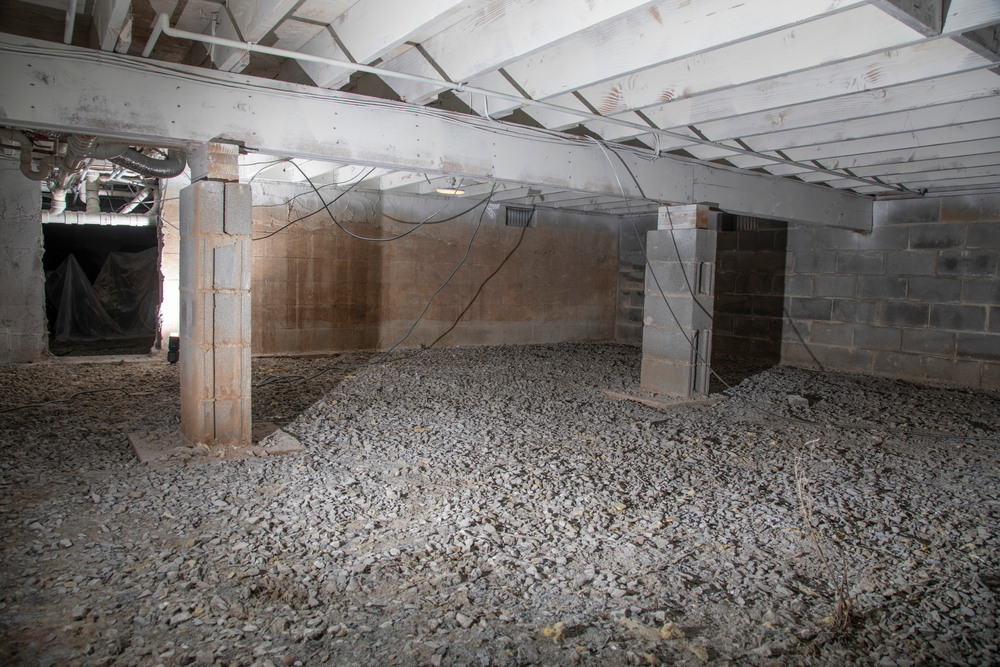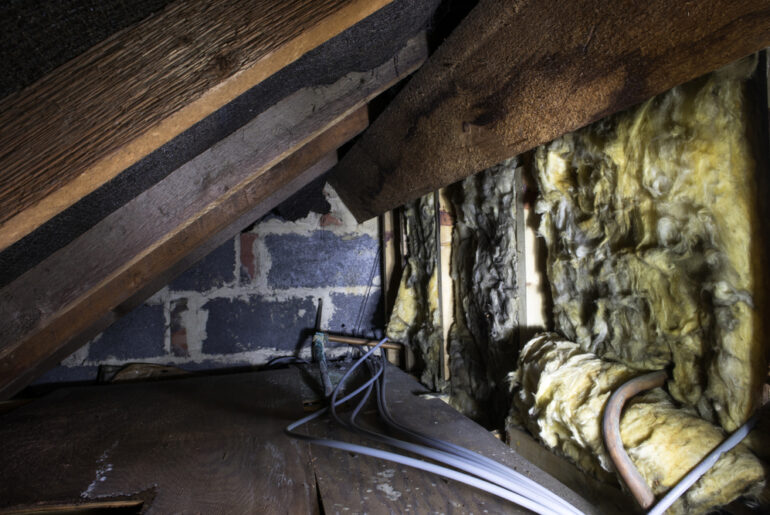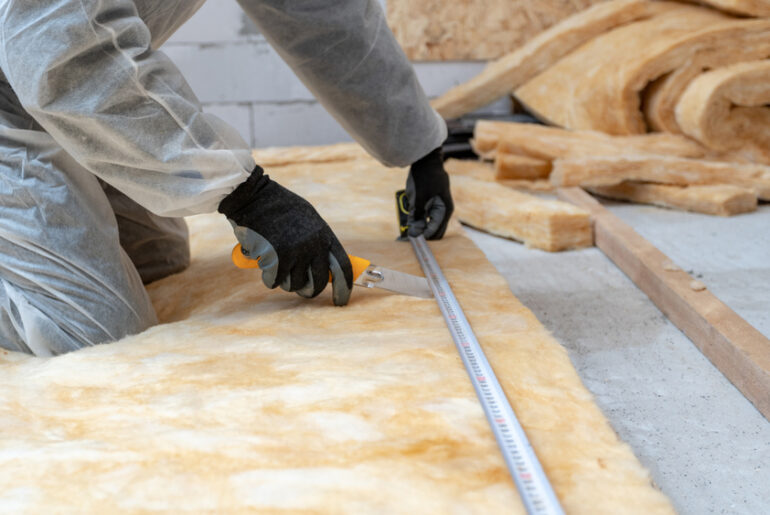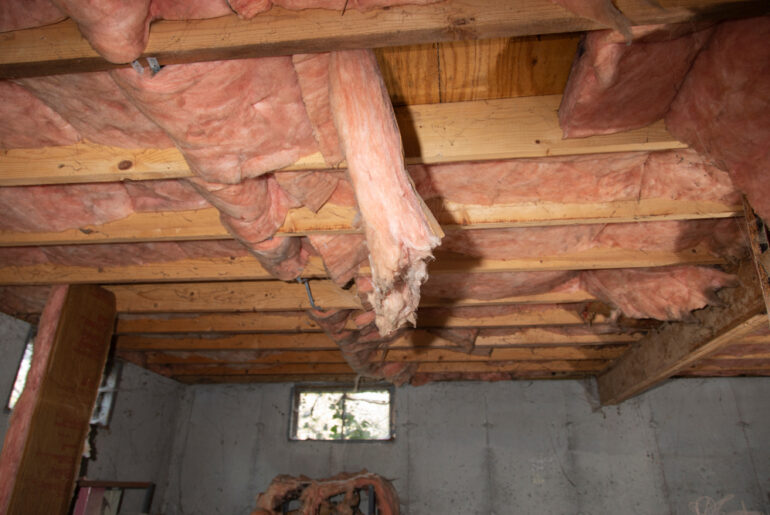Fiberglass insulation is famous for its versatility, flexibility, and affordability, which is probably why it is one of the first choice insulating materials. But there are cases where its lifespan and insulating efficacy have been questioned, particularly when used in moisture-prone areas such as crawl spaces. So this naturally begs the question, should you use fiberglass insulation in the crawl space?
Yes, you can use fiberglass for crawl spaces if the right conditions are met. Conditions like installing a vapor barrier and ensuring that the installation is done right are important for it to function effectively.
Now, what exactly makes fiberglass insulators a controversial topic among house owners? Does it actually absorb moisture when used in crawl spaces? And how can you maintain or prolong its lifespan?
In this article, we will provide enough information about fiberglass insulation in crawl spaces, its advantages, and risks and explore other alternatives.
Should You Insulate Crawl Space At All?
Most people don’t see the need to insulate their crawl space because particular insulation types do more good than harm. Still, this should not stop you from getting an insulator for your crawl space. Insulation does more good than harm because it helps you reduce certain utility costs and preserves quality air.
Why Fiberglass is Not Great for Insulating Crawl Space
Fiberglass is a combination of fibrous glass that gained fame after the gradual alienation of asbestos. It is considered one of the cheapest, most commonly used, and recommended insulation types.
Digging deep into this insulation type, you will discover that it has many advantages that make you want to hold on to it- it is cheap, has a good insulating property, and is fire and mold-retardant. But there are plenty of reasons fiberglass isn’t the best insulator for your crawl space, some of which include:
Stack Effect
The stack effect is a physics phenomenon that causes the warm and moist air in a building to rise to a cooler atmosphere. What this means in the context of your home is that warm and humid air from the crawl space can exploit small openings and rise to the floor of your home.
The small opening can be due to normal wear or tears or installation error (which is pretty common); this can cause the fiberglass to retain water, swell and sag over time.
Loses Efficiency Over Time
As explained earlier, the stack effect in the crawl space introduces moisture to fiberglass, which can further affect its insulating and mold-resistant ability. It is thought that about a 20% increase in moisture in fiberglass can lead to about 55% loss in insulating ability.
Mold and Mildew
While fiberglass does not absorb moisture, it can still hold moisture that finds its way into it. Now, the moisture in fiberglass can support mold and mildew growth and often act as a growth medium for them to potentiate.
Pests and Rodents
A worn ventilated crawl space will cause problems because the vent screens are the best route for rodents to access your home. Rodents are naturally attracted to warm and damp places that protect them from the element. Since the fiberglass insulation is exposed, it creates the perfect warm habitat for them to reproduce, eat, and live.
How Long Does Fiberglass Insulation Last in Crawl Space?
Under the appropriate conditions, fiberglass can last eighty to a hundred years without damage by mold or moisture. But, it begins to fall apart when used to insulate crawl spaces, and fiberglass can only last fifteen to twenty years in crawlspaces before the need for a change arises. The increased possibility of it coming in contact with moisture is the largest contributing factor to its shorter lifespan in crawl spaces.
Note that this duration can even be shorter in extreme cases of exposure to mold, moisture, and pest infestation.
Should I Remove Fiberglass Insulation From Crawl Space?
Fiberglass is not entirely bad as a crawl space insulating material and can still serve its purpose for more than a decade. You can still leave fiberglass in the crawl space as long as it doesn’t have a significant amount of moisture. Newly installed fiberglass can also be left alone, but you might want to install a vapor barrier to prolong its lifespan and augment its insulating property.
Also, ensure that the pair of hands you hire for the installation is professional and skilled enough to do the job right.
How to Ensure Longevity of Fiberglass Insulation in Crawl Space
You can still take specific steps to ensure that your fiberglass insulator lasts long before changing it. The key is a good maintenance culture, some of what you can do include:
Moisture & Mold Control
The first thing you want to do after you detect moisture on fiberglass is to look for the source. Afterward, consider installing a plastic vapor barrier on the floor to keep it dry. One way to achieve dryness is by using open cell spray foam insulation as a suitable solution because it is moisture permeable and creates an air seal that features warm and comfortable floors.
Proper Installation
It is essential to ensure that the fiberglass is installed correctly in the right crawl space area. You might want to hire a professional for this and skip the DIY for something simpler.
Regular Check
Conduct a regular check on the fiberglass to be able to quickly detect any problem before it escalates into an irreparable issue. Ensure that the fiberglass isn’t sagging or falling from the crawl space roof.
How is Fiberglass Installed in Crawl Spaces?
The key to using fiberglass on a crawl space for a long time is the installation process. A well installed can last a decade more than a poorly installed one. The installation process depends on whether the crawl space is ventilated or unventilated.
Ventilated Crawl Space
For a crawl space with ventilations in the perimeter wall, measure the cavity between the floor joists to know what you need. Once you get the right cavity size, insert it between the joists with the foil on the ground. Use a hammer stapler to hold the joists from one end of the cavity to the other and press slightly into place. Then, pull out the side tabs and use utility shears to cut pieces to fit round piping.
Unventilated Crawl Space
For this, you need a 1-by-1 pine board, hammer, and nails. Cut the insulation to the correct size with shears, hang the faced side against the concrete, put it on the 1-by-1 board, and nail it to the sill plate under the joists. Allow the insulation to hang like cotton and replicate for the entire perimeter.
Vapor Barrier
Add a 6-mil vapor diffusion barrier over the insulation after the installation. Attach to the floor with a hammer stapler, but overlap seams by 12 inches. Finish off the seams by taping well and looking around the perimeter to ensure the drainage works to prevent water from staying under the house.
What are Good Alternatives to Fiberglass for Insulating a Crawl Space?
There are a handful of fiberglass alternatives that can be used in a crawl space. They offer just the same amount of benefits as fiberglass with lesser disadvantages. We have reviewed some of them, and below are other insulation alternatives that work well for crawl spaces.
Spray Foam
There are two types of spray foam insulation: open-cell and closed-cell. Open-cell spray foam can increase to 100 times its initial size to fill every part while creating an air barrier, and it seals and prevents air movement.
Closed-cell spray foam expands when sprayed to create a vapor barrier. It stops air leakage and provides extreme insulating value.
Pros
- Swift and effective.
- Expands to fill gaps.
- Creates a vapor barrier on the surface.
- Can’t be damaged by moisture.
- High R-value.
Cons
- Can be over-sprayed.
- Thickness is inconsistent.
- High cost.
Rigid Foam Panel
A rigid foam panel is generated by shaping rigid foam insulation into stuff panels positioned on the crawl space’s woos. Typically, these panels use a closed-cell insulation layout.
Pros
- Forms vapor barrier.
- Inexpensive.
- Water-resistant.
- No messy installation.
- High R-value.
Cons
- Hard to install around obstacles.
- Can’t expand to fill the gaps.
Cellulose
Cellulose is a waterproof material that is necessary when insulating a crawl space. It is made of about 90% recycled materials and comprises plant fibers. Cellulose is best for masking noise and providing thermal insulation.
There are two types of cellulose insulators: batt and wet spray. Unlike batts, wet-spray cellulose uses water, but it is usually moisture retardant and prevents mold.
Pros
- Moisture retardant.
- Great for covering space inside and outside.
- Reduces noise.
- Provides thermal insulation.
Cons
- A gamble in some crawl spaces because it requires water.





